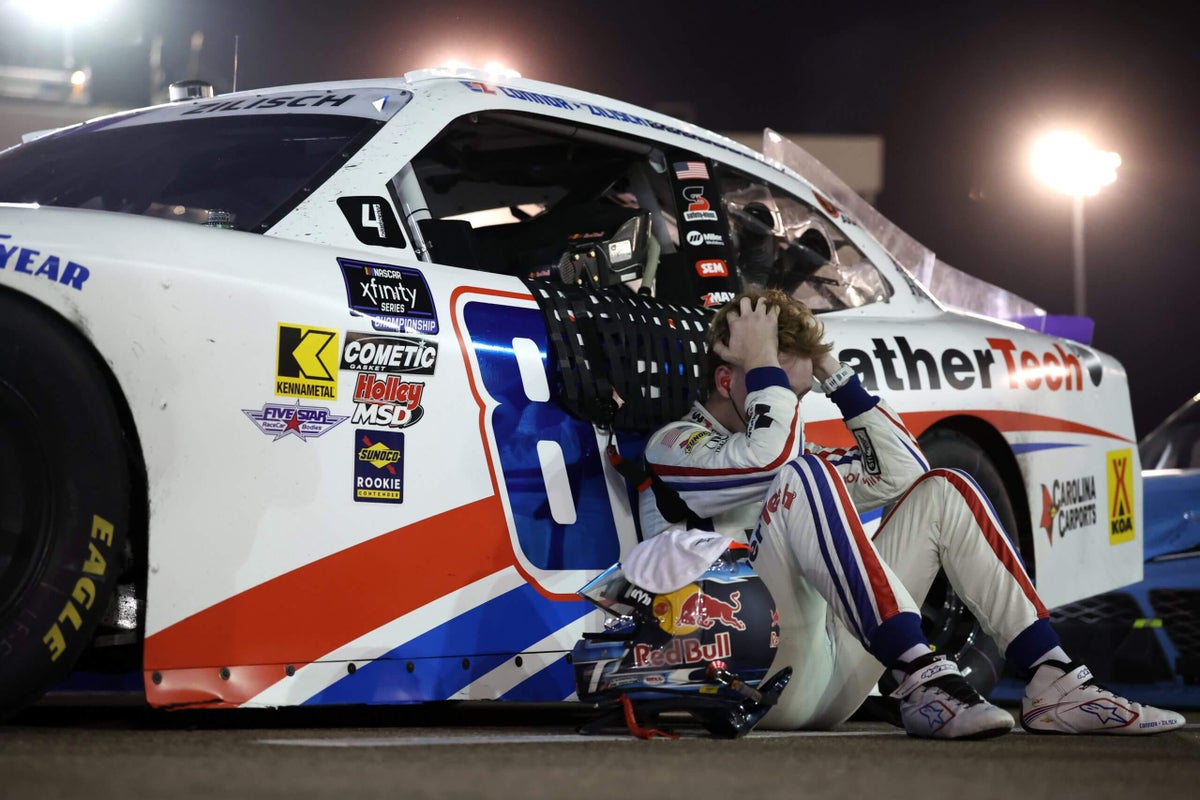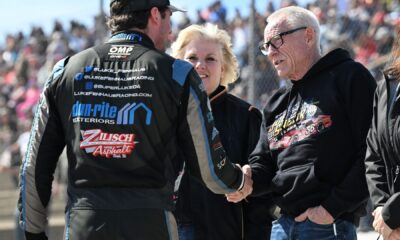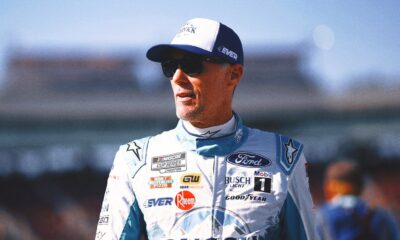
AVONDALE, Ariz. — In the midst of taking its final and long-overdue bow, NASCAR’s one-race championship format somehow found a way to make everyone feel bad about a worthy season champion.
Kyle Larson, in most NASCAR seasons and under most championship formats, could easily be considered the best driver of the year. He ended the year with the most points scored over 36 races, ended the 10-race playoffs with the most total points (when stage points are included for the final race) and prevailed in the current one-race format on Sunday. He tied for the most top-five and top-10 finishes in the series.
Yet because of how Sunday’s season finale unfolded, even Larson was robbed of the chance to feel the full-throated elation that accompanies a championship in every other sport on the planet.
Larson was absolutely thrilled to win the title, of course, and will make no apologies for becoming a two-time Cup Series champion — nor should he. But the manner in which it unfolded Sunday left such a hollow feeling for so many people, it was tough for even Larson to process.
“When you don’t win the race, you don’t lead a lap, you win the championship, you steal it from a guy who has tried for so long and had it in his fingertips, it’s a really weird feeling,” Larson said.
If it was weird for him, imagine how weird it was for everyone else at Phoenix Raceway.

By many measures, Kyle Larson was a deserving Cup Series champion. But the way Sunday’s championship race ended left even him with a “weird feeling.” (Chris Graythen / Getty Images)
Larson wasn’t the best or even second-best of the championship-eligible cars; an “average car at best,” he said. Then, with 97 laps remaining, he had a flat tire and was lapped — seemingly out of contention altogether.
Even when his team was able to regain track position, Larson still wasn’t nearly close enough to win the race or the championship in the final laps. Instead, he found himself excited about congratulating one of his competitors, Denny Hamlin, on a long-awaited first career title.
After all, Hamlin had done exactly what NASCAR has asked fans to accept in this format: Advance through a trio of three-race elimination rounds and be among the final four survivors, then rise to the occasion in a single race to outrun the remaining drivers.
Hamlin did that exactly at Phoenix. He won the pole position. He dominated the race, leading more than 200 laps. He was cruising toward the victory, unchallenged, just three miles away from finally becoming a NASCAR champion in his 20th Cup Series season. He did everything he was supposed to do in modern-day NASCAR to win the Cup title.
However, with three laps remaining, championship contender William Byron had a flat tire and hit the wall, bringing out a caution. The moment allowed Larson to erase the deficit to Hamlin. Suddenly, one great pit call and two chaotic laps later, Larson became the champion of the season.
Regardless of the drivers involved, it was difficult to see how it unfolded. Even though he is teammates with Larson, Byron felt uneasy about what happened and apologized to Hamlin (“It just doesn’t seem right,” Byron later explained). And Larson was forced to navigate the awkward mix of enjoying his championship (Which he should! He won!) with balancing the warts of a format he dislikes as much as most other drivers.
Of course, no one loathes it more than Hamlin, who has been the most outspoken against the dangers of NASCAR determining a 36-race season champion by a single event, only to nearly win his first title that way before being bitten by it in the cruelest manner imaginable on Sunday.
Hamlin hosts a podcast titled “Actions Detrimental,” a tongue-in-cheek nod to the NASCAR rule that allows officials to penalize drivers when competitors’ conduct or comments run counter to the sport’s best interests. However, few things have been more detrimental to NASCAR’s best interests than its own 12-year-old championship format, which has helped set back the sport for half a generation by repeatedly weakening the credibility of the season champion.
Former CEO Brian France’s misguided thirst for “Game 7 moments” has backfired spectacularly. NASCAR’s television viewership for many playoff races sank to record lows as fans became exhausted by a forced gimmick.
He failed to realize actual Game 7 moments, like the one we saw in the World Series on Saturday night, are special because they don’t happen every year. Instead of elevating the stature of its competitors, the format only cheapened the perception of NASCAR’s star drivers — and that was never clearer than this weekend.
On Friday night, there was a sense of dread as Corey Heim — who had a historically dominant season in the NASCAR Truck Series, with 11 wins — faced off against three competitors who won a combined one race during the season. There was no question who the best driver of the season was, but sure enough, Heim found himself in a Hamlin-like position: Leading the championship until a late caution was forced by another driver with a flat tire.
If not for one of the best restarts of all time (aided by NASCAR swallowing the whistle on its restart rule when Heim sat back to get a head start), Heim would have ended up as a championship also-ran.
WHAT A RESTART BY HEIM AND MAJESKI! pic.twitter.com/jvLZ5tPPBH
— NASCAR CRAFTSMAN Trucks (@NASCAR_Trucks) November 1, 2025
Playoff proponents cited the Heim restart as a plus for their argument, but it felt like eating a Twinkie — artificially sweet with tons of empty calories. The next day, all anyone could talk about in the garage was the sense of relief they felt that Heim ended up winning, avoiding what would have been a black eye for the sport.
Crisis averted! Well, at least for a few hours.
On Saturday night in the Xfinity Series championship race, the one-race format finally had its lowest moment. Connor Zilisch won 10 races as a rookie, led the series in nearly every major statistical category and, at one point, had a record-smashing 18 straight top-five finishes.
Zilisch had another good run at Phoenix, finishing third, but lost the championship to race winner Jesse Love, who had only one victory prior to Saturday night.
Love showed up under the given format and ran a great race, but ending up as the champion was not at all reflective of what NASCAR fans had watched over the entire season. The subdued nature of the postrace scene at the track — which included Zilisch slumped against his car in tears — was oddly quiet as fans shuffled out, unsure what exactly they’d just witnessed.
Then came Sunday, which offered one last chance for the one-race championship to redeem itself before NASCAR makes its yet-to-be-announced decision on a new format next season. NASCAR leadership in the post-Brian France era realized after last year that a change was necessary, and a larger sample size of races was already in the plans before this weekend.
“As you look at the future of the sport, (it’s) making sure a driver who has delivered all season long has the ability to be named a champion, and not have something maybe come down to one race,” NASCAR president Steve O’Donnell said Friday.
However, that decision was made years too late. So much damage has already been done, and look no further than this year for proof.
Larson may have been the best overall driver of the season, and NASCAR had a chance to celebrate the greatness of the most talented driver in American motorsports in what would have been a compelling battle with Byron and others. Instead, all the talk in NASCAR Nation today is the numbness fans feel for how Larson won it and how Hamlin lost it.
Ultimately, maybe it’s a good thing: After Sunday, there’s little chance the one-race format would have much support in the future. The playoff system was designed to eliminate drivers in the name of entertainment, but all it did was eliminate NASCAR’s own potential to build the next generation of stars.
Source link













